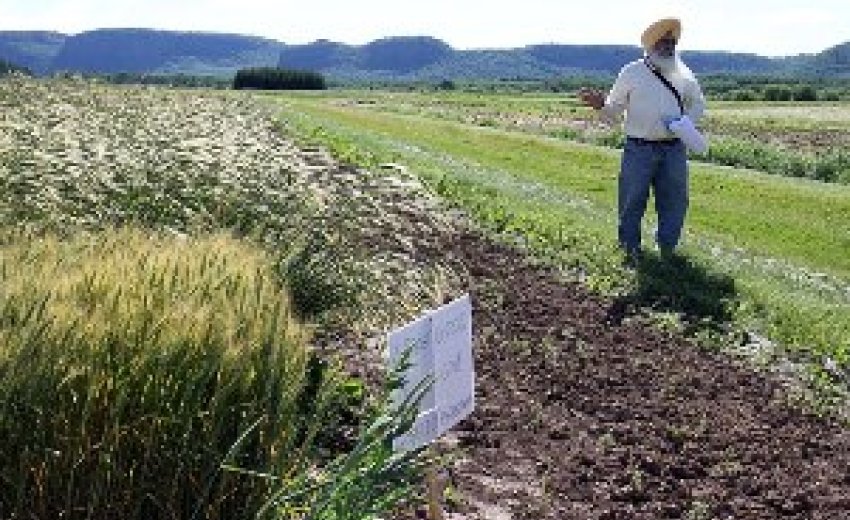 |
| Jeff Labine, tbnewswatch.com Thunder Bay Agricultural Research Station director of research and business Tarlok Singh Sahota leads a tour on July 23, |
With only one year left to go until its funding runs out, the Thunder Bay Agricultural Research Station is showing the fruits of its labour in an effort to secure more provincial backing.
The research station off Little Norway Road received $621,000 over a three-year period from Ontario in 2011. Some of the research the station does includes looking at ways to introduce new crops to the region and developing environmentally friendly alternatives that could be used by local farmers.
The station also looked at conducting small-plot research on the efficient and economic use of fertilizer nutrients, while minimizing the cost to local farmers.
Tarlok Singh Sahota, director of research and business at research station, led a tour to showcase some of the projects Tuesday.
While Ontario provides 50 per cent of the research station’s budget, Sahota argues that the facility is giving Ontario a good return on investment because of the boost it provides to the local economy via bringing in new crops and opportunities.
“We’re trying to convince politicians that they should continue funding the research facility here,” he said.
“There’s a boom in the economy. We’re looking at practices that will give us sustainable yield over a long period of time. My main point would be that the politicians and government shouldn’t be shy shelling out dollars a year because we don’t waste even a single cent.”
Sahota said the research at the station gives local farmers options that they wouldn’t have without it.
Some of the new environmentally friendly crops that were grown this year included black barley and a new variety on triticale forage.
He said new and different crops means the region is becoming diverse which helps if a disease were to spread through the region.
The research showed John Hanna, a farmer in the Slate River Valley area, that the region could grow chickpeas. Hanna became the first farmer to grow chickpeas in the province. He said chickpeas are a valuable product.
“There’s always a challenge in doing something new,” he said. “It’s never been grown in Ontario before and it looked promising. It’s not native here. Sourcing the seed was one issue then cultural practices and weed control took some research.”
Hanna said he received encouragement from the research station to start growing chickpeas. Without the station, farmers would have to do all the research themselves, which Hanna said would be incredibly difficult to do.
“It’s a great station and there’s a lot of work that goes on here,” he said. “It does work we can’t do on the farm. We couldn’t do the kind of work they do on the wide range. There’s something of everything here. We can only focus and do a good job on a field scale.”
Mayor Keith Hobbs also went on the tour. He praised the work being done at the station and said buying and supporting local farms is an important issue.
“It looks into different crops and shows how farmers in the area can produce their crops better,” he said.
“I was just talking to a dairy farmer and I just learned that they ship their milk out of the city and we get our milk from Saskatchewan. It’s crazy. This is a great learning experience not just for me but for all the farmers.”

